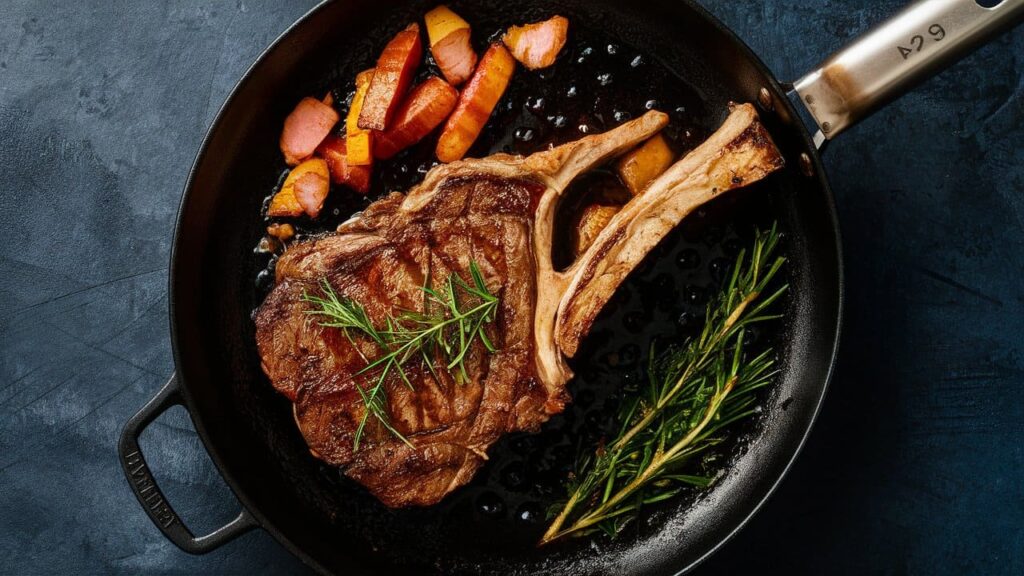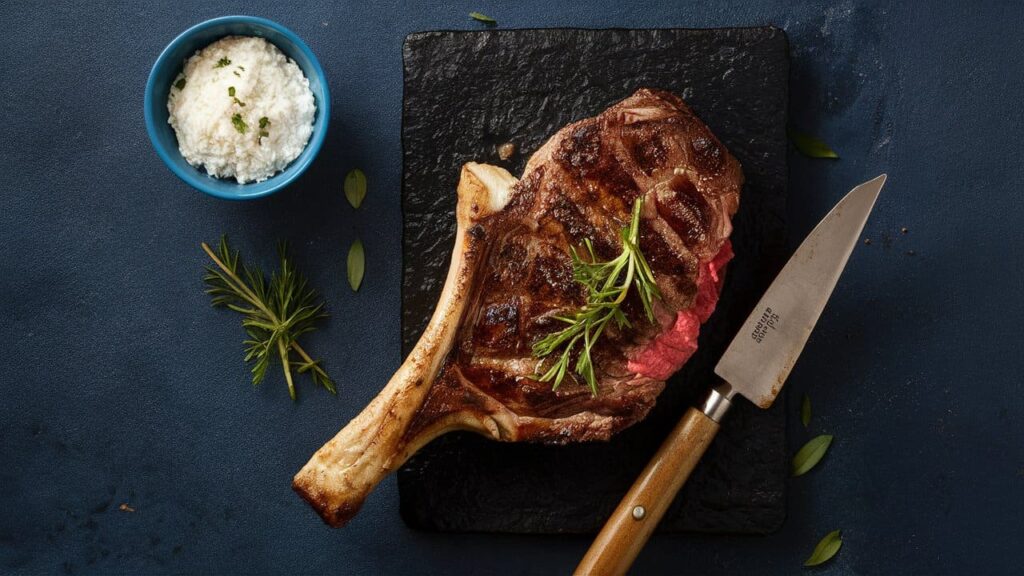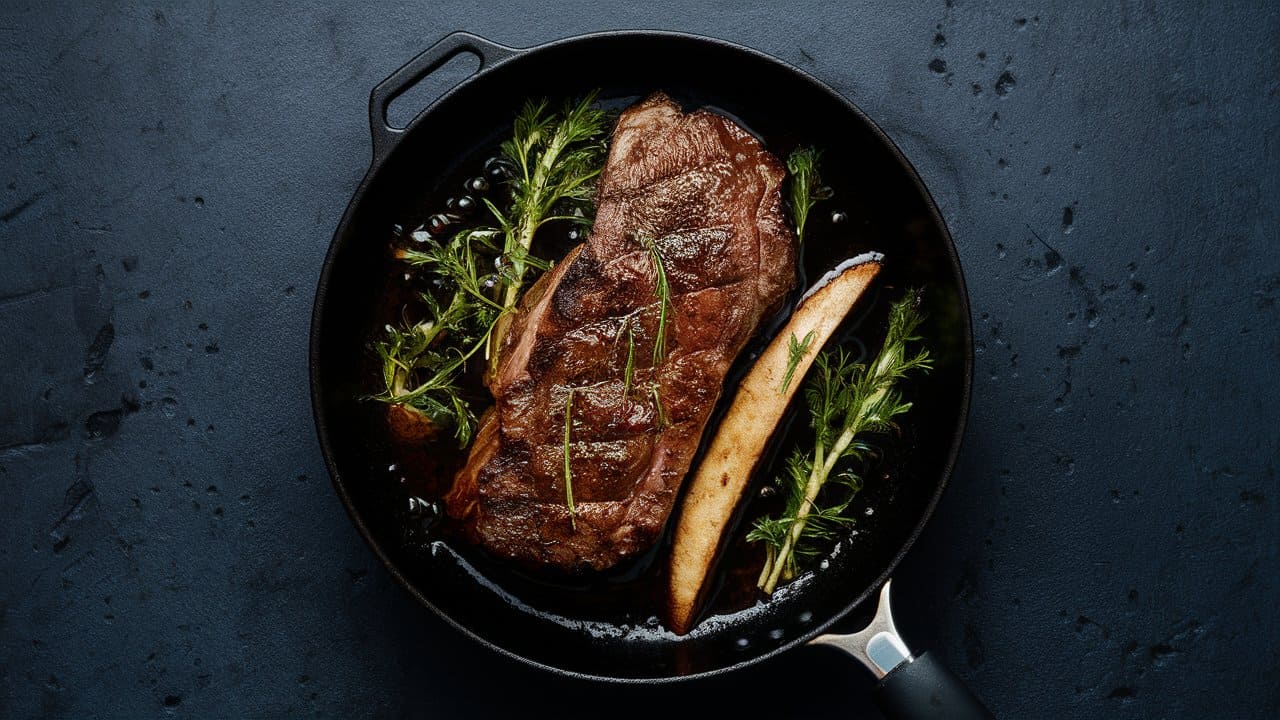Denver steak, a hidden gem among beef cuts, is prized for its rich flavor and tender texture. This cut, derived from the underused part of the chuck, offers a perfect balance of meat and marbling, making it ideal for a variety of cooking methods. In this comprehensive guide, we’ll explore the best ways to Cooking Denver steak, ensuring you can enjoy this delicious cut to its fullest.
Understanding Denver Steak
Characteristics and Benefits
Denver steak, often overshadowed by more popular cuts, boasts a unique combination of flavor and tenderness. Extracted from the chuck area, specifically beneath the shoulder blade, it benefits from a fine marbling that enhances its juiciness and taste. This cut is not only delicious but also offers great value, providing a gourmet experience without the premium price of more well-known steaks.
Selecting the Best Denver Steak
To maximize your cooking results, selecting the right steak is crucial. Look for steaks with a uniform and rich marbling; this fat distribution contributes significantly to the flavor and tenderness of the cooked steak. Preferably, choose steaks that are at least one inch thick, which allows for better control of the cooking process, ensuring a perfectly cooked interior with a deliciously seared exterior.
Preparation Tips
Proper preparation can make a significant difference in the cooking performance and flavor of Denver steak. Here are key steps to prepare your steak:
- Bring to Room Temperature: Allow the steak to sit out until it reaches room temperature. This helps in cooking the steak evenly.
- Seasoning: Salt your steak at least 30 minutes before cooking. This enhances the flavor and helps retain juices.
- Pat Dry: Before cooking, pat the steak dry to ensure a beautiful sear.
Cooking Methods Explored
Grilling Denver Steak
Grilling is a fantastic way to bring out the rich flavors of Denver steak. Follow these tips for the perfect grilled steak:
- Preheat Your Grill: Ensure your grill is hot before placing the steak on it. A high heat is crucial for searing the meat and locking in flavors.
- Monitor Cooking Time: Depending on thickness, grill the steak 4-5 minutes on each side for medium-rare.
- Rest Before Serving: Let the steak rest for a few minutes after grilling to redistribute the juices throughout the meat.
Pan-Searing Denver Steak
Pan-searing is ideal for those seeking a quick and flavorful cooking method. Here’s how to do it right:
- Use a Heavy Skillet: A cast-iron skillet is perfect for achieving a crisp, even sear.
- High Heat Is Key: Preheat your pan on high heat and add oil with a high smoke point, like canola or grapeseed oil.
- Don’t Overcrowd: Cook one steak at a time to avoid steaming and to ensure each steak sears properly.
Slow Cooking Denver Steak
For those who love a tender, fall-apart texture, slow cooking is the way to go. This method is particularly effective for cooking Denver steak, as it tenderizes the meat while infusing it with flavor:
- Low and Slow: Cook your steak on a low heat setting for several hours, depending on your slow cooker.
- Add Liquids for Moisture: Broth, wine, or a marinade can add flavor and moisture to your steak during the slow cooking process.
- Combine with Vegetables: Adding vegetables like carrots, onions, and potatoes can turn your steak into a hearty meal.
Finishing Touches and Serving Suggestions
Resting the Steak
Resting your steak after cooking is crucial for a juicy, delicious meal. This pause helps the juices settle, ensuring that each bite is succulent and tasty.
Cutting Against the Grain
To ensure the utmost tenderness, always cut your Denver steak against the grain. This means slicing perpendicular to the muscle fibers, making the steak easier to chew and enhancing its texture.
Serving Ideas
Denver steak is versatile and pairs well with a variety of sides. Here are some ideas to complete your meal:
- Roasted Vegetables: Seasonal vegetables like asparagus, bell peppers, or sweet potatoes make great companions.
- Starchy Sides: Consider serving with mashed potatoes, rice, or a rustic bread to soak up the juices.
- Salads: A crisp green salad or a tangy coleslaw can add a refreshing contrast to the rich flavors of the steak.

Enhancing Flavor: Marinades and Rubs
Choosing the Right Marinade
Marinades not only tenderize Denver steak but also infuse it with robust flavors. When selecting a marinade:
- Acidic Ingredients: Include components like vinegar or citrus juice, which help in breaking down tough fibers.
- Oil and Herbs: Combine oil with fresh herbs and spices to coat and flavor the steak evenly.
- Marinating Time: For Denver steak, a marinating time of 2-6 hours is ideal to enhance flavor without making the meat mushy.
Crafting the Perfect Dry Rub
Dry rubs are a quick, effective way to pack your Denver steak with flavor:
- Balanced Flavors: Mix equal parts of salt, sugar, and savory spices such as garlic powder, paprika, and black pepper.
- Application: Generously coat the steak with the rub and let it sit for at least 30 minutes before cooking.
- Storage: Extra rub can be stored in an airtight container for future use.
Infusing Smoke Flavor
For those who enjoy the smoky taste typically associated with grilling but are using other cooking methods, consider:
- Smoking on a Grill: Use wood chips while grilling. Hickory or mesquite chips add a nice smoky flavor.
- Liquid Smoke: A few drops of liquid smoke added to marinades or during pan-searing can impart a subtle smoky essence to the steak.
Pairing with Sauces and Butters
Classic Sauces for Steak
Elevate your Denver steak with a sauce that complements its rich flavor:
- Bearnaise Sauce: This tarragon-infused butter sauce is a classic pairing with steak.
- Chimichurri Sauce: For a fresher take, this herbaceous green sauce adds brightness and zing.
- Peppercorn Sauce: A creamy, spicy sauce that brings out the steak’s bold flavors.
Compound Butters
Adding a slice of compound butter to a hot Denver steak can transform it with additional flavors:
- Garlic Herb Butter: Mix softened butter with crushed garlic, chopped parsley, and a pinch of salt.
- Blue Cheese Butter: Combine blue cheese with butter for a rich, tangy topping.
- Spicy Chipotle Butter: Blend chipotle peppers with butter for a smoky, spicy kick.
Wine Pairings
The right wine can enhance the dining experience by complementing the flavors of Denver steak:
- Red Wines: Full-bodied reds like Cabernet Sauvignon or Malbec pair beautifully, balancing the richness of the meat.
- White Wines: For a lighter pairing, a bold Chardonnay can stand up to the steak’s flavor without overpowering it.
Tips for Perfect Cooking
Temperature Control
Achieving the perfect doneness is all about controlling the cooking temperature:
- Thermometer Use: Always use a meat thermometer to check the internal temperature of your steak. Aim for 130°F for medium-rare.
- Heat Management: If pan-searing, manage the heat to avoid burning the spices or marinade. Start high, then lower as needed.
Avoiding Common Mistakes
Here are a few pitfalls to avoid for the best results:
- Overcooking: Denver steak is best enjoyed from rare to medium. Overcooking can make it tough.
- Cutting Too Soon: As mentioned earlier, resting the steak is crucial. Cutting too soon can lead to a loss of juices.
Using Leftovers
If you find yourself with leftover Denver steak, there are several delicious ways to repurpose it:
- Steak Sandwiches: Slice thinly and serve on toasted bread with onions, mushrooms, and your favorite sauce.
- Beef Salads: Toss chunks of steak with greens, fresh vegetables, and a vinaigrette for a hearty salad.
- Steak Tacos: Chop the steak and warm it up for quick and tasty tacos.
Serving and Presentation
Plating Techniques
Presentation plays a key role in enhancing the dining experience. Here’s how to plate your Denver steak for maximum appeal:
- Slicing: Slice the steak against the grain into even, attractive pieces. Arrange these slices neatly on the plate.
- Garnishes: Use fresh herbs, a sprinkle of coarse sea salt, or edible flowers to add color and interest to your dish.
- Sauce Artistry: Drizzle sauces artistically around the plate or use a spoon to create elegant sauce drops or swirls.
Side Dish Pairings
The right side dishes can complement and enhance the flavors of your Denver steak. Consider these options:
- Creamy Polenta: A smooth, buttery polenta serves as a perfect base for your richly flavored steak.
- Grilled Vegetables: Charred broccoli, bell peppers, or zucchini add a smoky flavor that pairs well with the meat.
- Potato Variations: Whether roasted, mashed, or au gratin, potatoes are a classic steak companion.

Setting the Table
Create an inviting atmosphere by paying attention to your table setting:
- Elegant Dinnerware: Choose plates and utensils that match the occasion and enhance the visual appeal of your meal.
- Table Linens: Use clean, crisp linens, including napkins and tablecloths, to add a touch of sophistication.
- Lighting and Decor: Soft lighting and simple decor can set the mood for a memorable dining experience.
Health and Nutritional Aspects
Health Benefits of Beef
Denver steak is not only delicious but also nutritious:
- Protein: High in quality protein, it supports muscle repair and growth.
- Iron: Rich in iron, it helps in preventing anemia and boosting energy.
- Vitamins: Contains essential vitamins like B12, which is crucial for brain health.
Dietary Considerations
When incorporating Denver steak into a healthy diet, consider the following:
- Portion Control: Stick to recommended serving sizes to keep calorie intake in check.
- Balanced Meals: Pair your steak with vegetables and whole grains for a balanced meal.
- Cooking Methods: Opt for grilling or baking over frying to reduce fat intake.
Allergies and Sensitivities
Always be mindful of potential allergies and food sensitivities among your diners:
- Gluten-Free: Ensure that any marinades or sauces are gluten-free if serving guests with gluten intolerance.
- Dairy-Free Options: Offer dairy-free butters or sauces for those avoiding dairy.
Final Thoughts and Recommendations
Experimenting with Flavors
Don’t be afraid to experiment with different herbs, spices, and marinades to find your perfect steak flavor. Each variation can bring a new dimension to your Denver steak experience.
Continual Learning
Cooking is a journey of discovery. Continue learning about different cuts, cooking techniques, and flavors to enhance your culinary skills and enjoyment.
Sharing the Experience
Cooking a great meal like Denver steak is an experience worth sharing. Invite friends or family to cook together, share your meals, and enjoy the communal pleasures of dining.
In crafting this comprehensive guide on cooking Denver steak, our goal has been to equip you with the knowledge to not only cook this wonderful cut to perfection but also to enjoy and share the full experience of its preparation and consumption. From the selection of the steak to the final presentation, each step is an opportunity to explore your culinary creativity and enjoy the rich flavors of one of the beef industry’s best-kept secrets. Enjoy your cooking, and most importantly, savor every bite!
You can get more recipes from here:

